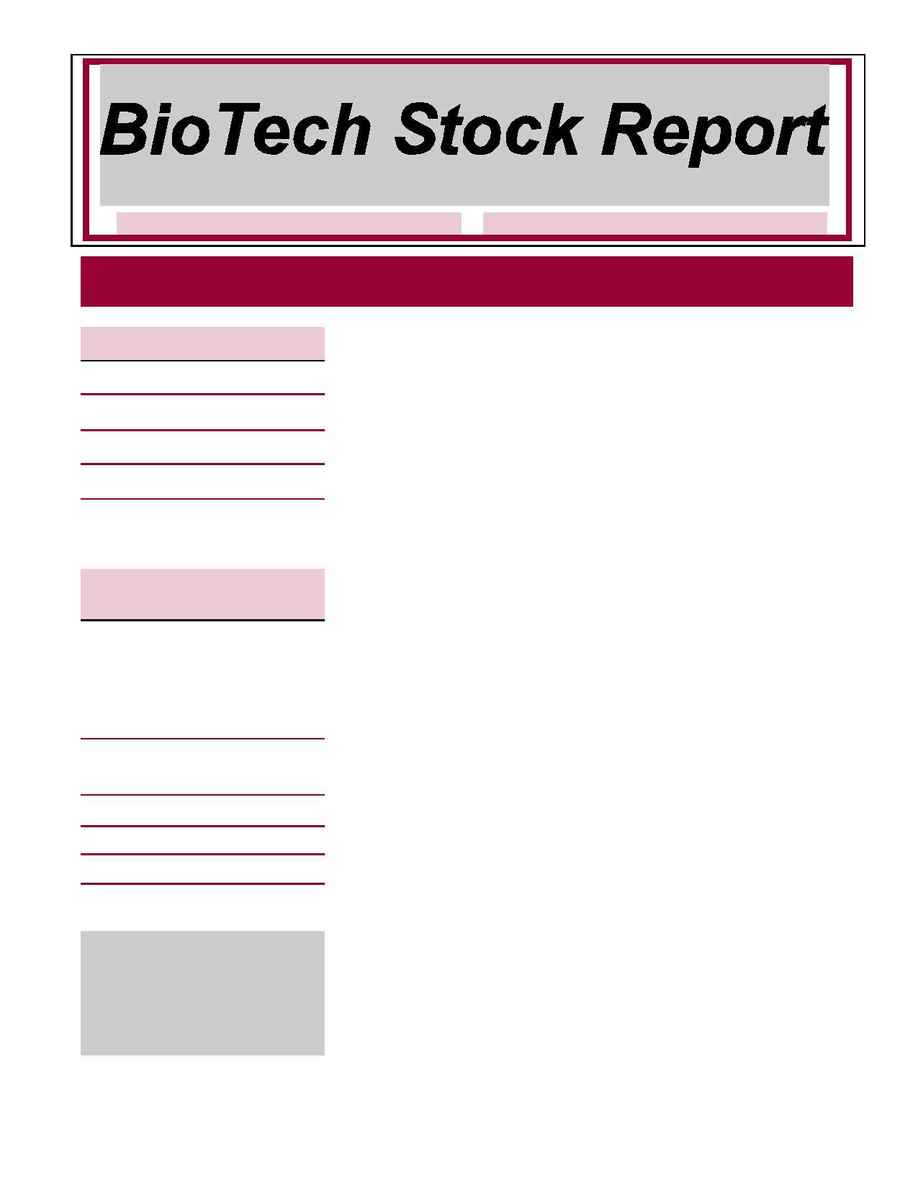
1
The investment report that gives you the essentials to wisely invest in biotechnology securities.
Volume 7, Issue 1
March 2003
Controlling MS
In this issue of the BioTech Stock
Report we focus on a central nervous
system (CNS) disorder, multiple sclero-
sis (MS). MS is considered an autoim-
mune disease, a condition where the
body's immune system, in which nor-
mally attacks infectious agents, begins
to attack normal cells, in this case the
brain and spinal cord. In MS, the dis-
ease attacks, damages and destroys
the myelin sheath that surrounds and
protects the nerves of the CNS. The
loss of myelin over time results in irre-
versible damage to the nerves, causing
the patient to lose partial or total bod-
ily function.
According to the Multiple Sclero-
sis Association of America, most peo-
ple with MS experience their first
symptoms and are diagnosed between
the ages of 20 and 50. MS is the most
common neurological disorder diag-
nosed in young adults. In the U.S.
greater than 350,000 individuals have
MS, and an estimated 10,000 to 15,000
new cases are diagnosed each year.
Worldwide, MS is thought to affect
more than 1.5 million people.
As widespread as the disease may
appear by the large number of indi
To order visit www.biotechsage.com
or call (503) 649-1355
Concerns or comments :
info@biotechsage.com
Subscriber Messages
BioTech Sage Report has been re-
named to Wong`s BioTech Stock
Report.
Current Issue BSR # 72
& Archives
Username:
Password:
Effective: February 28, 2003
Login at http://www.biotechnav.com
BioScope
Bio Analysis
1-5
Company Bio
6-8
BioTech Stock Update
8-12
Bio Portfolio
13-15
Bio Indices
16
viduals afflicted, MS does appear to
target some individuals more than oth-
ers. For example, women are three
times as likely as men to develop MS,
and the occurrence of the disease is
positively correlated with the earth's
latitude. People living beyond the 40
o
mark north or south of the equator are
far more likely to develop MS than
those living in the warmer climates
near the equator. People in North
America, Europe and southern Austra-
lia have a higher incidence of the dis-
ease than those in Asia. The increased
incidence of MS also correlates with
those of Northern European or Scandi-
navian ancestry; most MS patients are
Caucasian.
A chronic and disabling disease,
MS is extremely costly, both for the
individual and the family, as well as for
the society. Early onset, long duration
and effects on employment contribute
to the extensive costs related to the
illness. Unfortunately, comprehensive
data on the cost of MS at current lev-
els is sparse. Extrapolating from a 1998
publication, which estimated that the
national annual cost of MS in 1994 was
over $6.8 billion, we can safely esti-
Wong's
